Matador Network's Blog, page 1021
September 4, 2019
Brussels-sprouts-infused gin
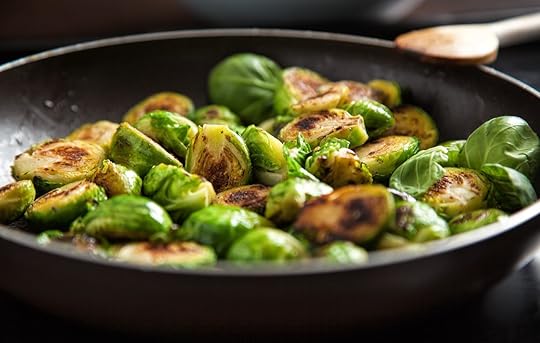
Pickering’s Gin in Scotland is leaning into the Christmas spirit already. The company recently released a set of “Festively Flavoured Gin Baubles” in a series of intriguing infusions — including one flavored with Brussels sprouts.
According to Food & Wine, these gin-filled ornaments, which you can hang on your Christmas tree (in case you need a spot of relief from small talk with family members you haven’t seen all year), come in six flavors: Christmas clementine, festive cranberry, spiced pear & cinnamon, figgy pudding, and plum & ginger. Lastly, and perhaps most disconcerting of all, there’s also Brussels sprouts. And yes, its electric green hue will certainly put you in the holiday mood.
Brussels sprouts are a hearty fall and winter vegetable, which might explain its inclusion in the set, but if you get past the initial confusion of a vegetable-flavored spirit, it does actually make sense to flavor gin this way. Think about it: Gin is beloved for earthy notes; Brussels sprouts have savory, herbal flavors.
“We know it sounds bonkers, but the humble sprout delivers a pleasantly sweet, slightly nutty gin, perfect for mixing,” Pickering’s elaborates on the company website. “Our Brussels Sprout gin finishes with a delightfully herbaceous, fresh green pepper twang.”
These baubles are perfect for anyone even mildly curious about what vegetable-infused gin tastes like as each one contains just a little more than a full shot of liquor. Pickering’s insists it’s tasty in a Gin and Tonic garnished with a slice of cucumber. And if Brussels sprout gin piqued your interest in other off-the-wall gin infusions, Pickering’s also distills a pink grapefruit and lemongrass liqueur.
Pickering’s used 10,000 Brussels sprouts that would have ended up in the waste bin to distill this concoction. Plus a portion of the profits of each holiday set of gin baubles will benefit Contact the Elderly, an organization that provides companionship for people who would otherwise spend the holidays alone. Doing good deeds for the planet and its people is surely in the Christmas spirit. 

More like this: The world’s most exciting place to drink gin is much more famous for its whisky
The post A Scottish distillery is making Brussels sprouts gin for Christmas appeared first on Matador Network.
Where does ketchup come from?
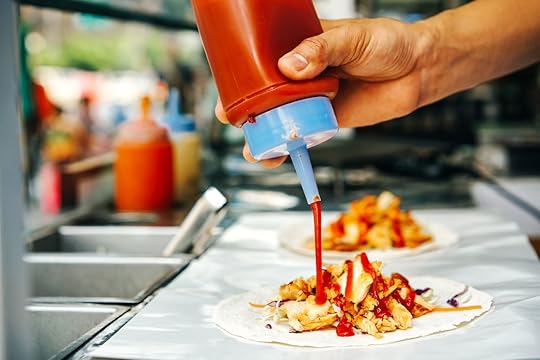
There’s hardly an American alive today who isn’t intimately acquainted with ketchup. It’s a taste we can recognize blindfolded: the satisfying (though a tad basic) balance between savory and sweet tomatoes (or at least tomato concentrate). It’s most common companion is burgers and fries, of course, but American ingenuity has led to putting ketchup in things like meatballs, barbecue sauce, and scrambled eggs. According to one survey, the average American eats 71 pounds of ketchup every year. You know the phrase “as American as apple pie”? It should actually be as “as American as ketchup.” There’s just one small problem. Ketchup — at least the original version — is not an American innovation. In fact, the first ketchup recipes didn’t even contain tomatoes.
Ketchup’s journey to America begins in Asia. Traders learned about fermented fish sauce from the Vietnamese and brought it to China. As far back as 300 BCE, Chinese texts refer to a paste made from fish and soybeans called “koe-cheup” or “ke-chiap.” A type of fermented condiment made with soybeans is common throughout the region; for instance, a sweet version made with palm sugar is called kecap or ketjap manis in Indonesia.
Early references to a sauce called “catchup” began appearing in Western literature around 1699, when a dictionary referred to a “high East-India Sauce” with that name. In the 18th century, the British began exploring Indonesia where they ran a trade post. It’s possible they encountered kecap there for the first time, according to Dan Jurafsky, author of The Language of Food. Another theory is the British were introduced to it by Chinese traders who operated throughout Southeast Asia at the time.
Either way, the tangy condiment caught the attention of the Brits. It added depth and character to food, and they wanted to recreate it on their home turf. Still, their early version, which they referred to as katchup or catsup, didn’t resemble the condiment we know and love today.
Early recipes for ketchup call for ingredients like mushrooms, anchovies, and oysters — an earthier, more umami-focused concoction similar to Worcestershire sauce. Apparently Jane Austen’s family favored a version made with walnuts. By the mid-1700s, katchup referred to any sauces that incorporated spices such as cloves, ginger, or pepper and had become a staple in the British kitchen.
Take this 1727 recipe for “English Katchup” by one Eliza Smith and dug up by Jurafsky. Smith developed it for the “accomplished gentlewoman.” It calls for more than a pint of white wine, anchovies, ginger, pepper, lemon, nutmeg, and cloves. She recommends using it as a dressing for meat or fish dishes.
The game-changer came much later, in the 19th century, when a Philadelphia-born horticulturist named James Mease had what would turn out to be a revolutionary idea: Why not try making ketchup from tomatoes (which he affectionately referred to as “love apples”)? His 1812 recipe is the first ever for tomato-based ketchup. However, his spiced tomato paste didn’t include sugar and vinegar. Those essential ingredients of modern ketchup would come later. Regardless, tomato-based ketchup is a strictly American invention.

Photo: designs by Jack/Shutterstock
Sixty-four years later, Henry J. Heinz began mass-producing ketchup. His company had practical reasons for adding vinegar to the recipe. Before Heinz decided to take over the ketchup industry, preservatives like sodium benzoate were used to keep the tomatoes from spoiling. But sodium benzoate caused public outcry, and eventually medical professionals agreed it posed serious health risks.
Heinz picked up on the fact that Americans wanted a health-conscious alternative, so he opted to use ripe, red tomatoes in his recipe, which contain pectin (a natural preservative), vinegar to increase the shelf life, and, finally, sugar to sweeten it up for the American palette. He came up with the modern ketchup spelling, too — at the time catsup was still the preferred term.
Heinz ketchup was an instant hit. By the early 1900s, the company had sold millions of bottles. People simply stopped making ketchup at home, and the recipe began to vanish from cookbooks.
Heinz ketchup proved so popular for a couple of reasons. Not only does it have a long shelf life, but it’s versatile, too — it can boost the flavor of almost any dish. Ketchup is a humble ingredient, deceptively simple. Yet there’s a reason its flavor hasn’t evolved at all in more than a century: It’s almost universally compatible. In Poland, ketchup is a common pizza topping. In Germany, it’s paired with spicy sausage. Though ketchup is quintessentially American — convenient to use, mild, and sweet — it is beloved everywhere.
Heinz alone sells more than 650 million bottles of ketchup around the world each year for a reason: Not only does it taste good, but it also contains just as much nostalgia as it does tomatoes. Our parents let us douse our fries in it. It appeared at all our family dinners and barbecues and Fourth of July parties. No matter how it landed on our shores, Americans love ketchup, and our cuisine, from the lowbrow hot dog to a more complex chili, simply wouldn’t be the same without it. 

More like this: The world history of all your favorite condiments
The post How ketchup went from Chinese fish sauce to an American staple appeared first on Matador Network.
Where to hike by Seoul, South Korea
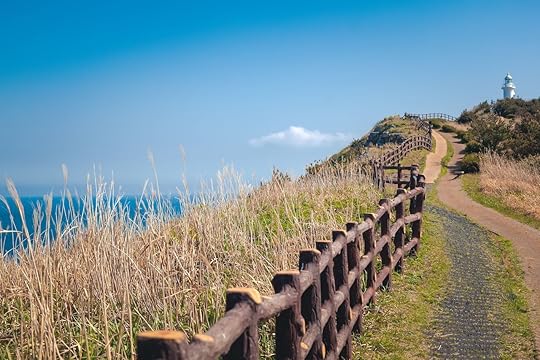
Seoul is brimming with late-night entertainment, endless rounds of barbecue, and countless shopping venues. But don’t let the sea of neon signs and skyscrapers fool you. Outside the urban sprawl of South Korea’s capital lies a plethora of verdant escapes from the intense, crowded, digitally obsessed city. If you want to know why it’s called the land of the morning calm, leave the Soju-soaked streets behind and head out into the wild. Whether you are a born woodsman or a newbie on the trail, there are many options when it comes to experiencing the outdoor adventures South Korea has to offer. Here are four hiking and biking trips to take around the peninsula.
1. Cheonggyesan Mountain
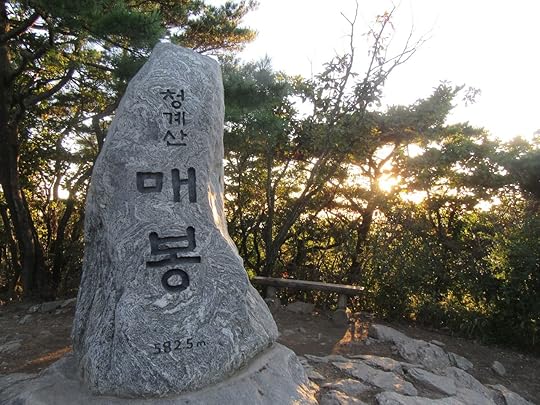
Photo: TheBlueFox/Shutterstock
Less known to foreigners than its larger cousin, Bukhansan Mountain, Cheonggyesan is quite popular with local hikers. This mountain sits southeast of Seoul on the border of Seocho-gu and Bundang-gu. You have many options to choose from when deciding which path to take, including both trails with built-in stairs and those without. The most popular trail is about two miles long and just under a two-hour hike one way. Beginning at the Weonteogol entrance, it takes you past Weonteogol spring, a large flat resting area named Heliport, and, finally, the 1,900-foot peak at Maebong. Once you reach the top, you’ll have a stunning view of the bustling metropolitan area below, especially on a smog-free day.
Plan your hike around what you’d like to experience. Some trails offer stunning views of rocky wooded cliffs and small valleys. Other trails are peppered with small temples and pagodas. Some traverse through dense forest. Many locals choose to take a different way down once they reach the peak, as it can be fun to encounter new flora, fauna, and terrain. No matter which route you choose, be ready for crowds.
The local hiking etiquette dictates that slower hikers stick to the far-right edge of the trail, while faster climbers walk in the middle, and those coming down the mountain use the opposite side. Plenty of rest areas dot each trail. Some have benches and resting pagodas, and others even have calisthenics equipment to help stretch your tired muscles. It’s not uncommon to see groups of hikers breaking for lunch along the trail, toasting with small cups of Makgeolli, a rice wine, and Soju, Korea’s better-known liquor.
Take advantage of the merchants in the underpass leading to the park entrance to stock up on water and snacks before heading up the mountain as there are no food or drink options at the peak. Also, pay attention to the trail maps as some trails are little more than small, overgrown footpaths. It’s easy to get lost in the woods, so be mindful and, when in doubt, follow the locals.
Whatever trail you take, you can easily reach the park on public transportation. Traveling from Seoul, head to Yangjae Station on Line 3. Leave out of exit 10 and take bus number 4432 to the Weonteogol stop. Walk beneath the underpass and follow the crowds of local hikers in brightly colored gear to the park entrance. If you’re more comfortable on the subway, at Yangjae Station, transfer from Line 3 to the Shin Bundang Line and travel to Cheonggyesan Station. Follow the signs to Exit 2 and walk about 400 meters to the underpass that leads to the park entrance.
2. Achimgari River and Gangwondo

Photo: Ahn Eun sil/Shutterstock
For a more unique hiking adventure, leave the city completely behind and travel to the Gangwondo region for a day-trip. Lying northeast of Seoul, this region offers year-round outdoor activities, be it hiking and rafting in the warmer months or skiing and ice-fishing during the winter. During the hot and humid Korean summer, cool off with a combined forest and river hike at Achimgari River.
From Inje, you will have a steep uphill climb on flat terrain before reaching the forest entrance to the river valley. Most hikers choose to pack a lunch and an extra pair of clothes in a waterproof bag. After the 50-minute trek to the trail entrance, there’s a small strip of shops where you can purchase beverages and light snacks. Take a break in the forest shade along the river and enjoy the fresh air and calming flow of the river before starting your trek, where you can choose to swim or just wade through the river. The water is relatively shallow, and the current isn’t very fast. Most hiking guides will lead you on a looping trail that crosses the river several times as you hike through the dense forest on either side of the banks. Halfway through the hike, there’s a large cliff that is popular for jumping into the river and having a swim to cool down. You’ll also pass several natural, flat areas along the way where hikers can rest during the journey.
This hike is quite remote, and public transportation is not a viable option. It’s also difficult to locate the park entrance without local knowledge. Fortunately, there are many groups dedicated to hiking and outdoor adventure in Korea, which you can contact online. Join a hiking group or charter a tour to reach this unique hike. The entire trip takes about five hours total, ending at the bottom of the hill where your climb began. Change into your dry clothes, head back to your bus, and have a nice nap during the ride back to Seoul.
3. Jangbongdo Island

Photo: pradis3535/Shutterstock
South Korea is surrounded by several thousand islands offering unique terrain features and stunning views. Take a day trip off the coast of Incheon, a major city northwest of Seoul, and visit the small island of Jangbongdo to experience a serene hike. Suitable for beginners, this trek begins with a 40-minute ferry ride from SamMok Passenger Terminal. Enjoy the sea breeze along the railing on the upper deck and watch the locals throw food offerings at the visiting seagulls. Once you dock, follow the sea of people to the terminal exit. Though this hike is easy to complete, it can be difficult to locate the trail entrances. This is another opportunity where joining a hiking group will make the experience a lot less stressful.
Start your journey on the beach near the ferry terminal. Take in the sparkling blue waters of the ocean as you stretch and prepare for the hike. The most popular route follows a winding path along the island ridge, starting on the beach, then traversing rocky dirt paths through the forest until it reaches the beach on the opposite side of the island. It’s about a five-hour trek. Along the way, enjoy gorgeous cliff-top views through tree-lined ridges. There are resting pagodas along most trails.
Alternatively, hike down to the rocky beach to relax and listen to the waves. No matter which you choose, end your hike with a refreshing swim at a small beach camp. Many locals pack their cars with tents and grills and use the ferry to escape to the island for a beach camping getaway. You can buy swimwear and basic food items at one of several shops scattered along the beach. Take a dip in the ocean or nap in the sand before heading back to the ferry, walking a direct path along the paved island road diagonally across the island interior.
The easiest way to reach Jangbongdo island from Seoul is to take the Airport Railroad Line from Seoul Station to Unseo Station. Leave from Exit 1 and take bus 204 for a 10-minute ride to the SamMok Quay Entrance. Be aware that you need your passport to purchase a ticket and board the ferry, and take note of the ferry schedule so you don’t miss the last departure.
4. Udo Island

Photo: Olesya Kuznetsova/Shutterstock
Jeju is South Korea’s most famous island. Nicknamed little Hawaii, it boasts a more tropical climate than the mainland. But for even more of an escape, hop on a ferry for a 15-minute cruise from Jeju to tiny the island of Udo. Snap some photos of the quaint lighthouses surrounding the island as you head to the dock. The name Udo translates to cow, and locals will try to convince you to squint and see the shape of a cow lying on its side. Udo is a vacation paradise with inns, boutique hotels, and cafes lining the coast, all angled for optimum views of the ocean. The island is relatively flat and an excellent location for an easy biking trip.
The bike route is only about a two-hour round trip journey, minus any time you stop to take in the lovely sights and visit the many attractions dotted along the coast. Immediately outside of the ferry terminal, you’ll be bombarded with shops open for you to rent bikes, motorbikes, and golf carts to whisk you around. Take your pick from the baskets of beat-up helmets, then choose your bike. Make sure to pick up a map before you go to help you plan your pit stops. You can bike along the two-lane road that winds along the coast, sharing space with motor vehicles and pedestrians. Take your time to explore attractions such as Popcorn Beach and the Udo lighthouse.
Udo is very popular with young couples and families, and no trip here is complete without sampling the island’s famous peanut ice cream as you watch waves crashing into the cliffs. Before reaching the ferry terminal at the end of your journey, take a detour along one of the narrow roads that wind through the villages of Udo. You’ll get a glimpse of local life, passing horse pastures, farms, and ramshackle homes as you head back to turn in your bike and board the ferry to Jeju.
This adventure is for those explorers looking for longer than a day trip. When traveling from Seoul, you will need to hop on a plane for a short flight to Jeju Island, then head to Seongsan Port. Take note of the ferry schedules. There are two ferry terminals on Jeju with trips to Udo, and there are also two terminals on Udo Island. Each terminal has a unique schedule. Your bike shop may offer shuttle service to the appropriate departure ferry if requested, so make sure to inquire once you’ve returned the biking equipment. Remember to bring your passport as you’ll need it to purchase ferry tickets and rent a bike. Bring your driver’s license if you plan to rent a motor vehicle instead. 

More like this: Snorkeling on South Korea’s mysterious Ulleungdo island
The post 4 refreshing hiking adventures around South Korea from Seoul appeared first on Matador Network.
Where to ski outside Sarajevo

If you’re looking for a ski adventure with a twist this winter, it’s worth exploring the slopes in Bosnia and Herzegovina. The Balkan country played host to the 1984 Winter Olympics back when it was a part of Yugoslavia. While sports like figure skating and hockey were played in the city of Sarajevo, the mountains hosted alpine skiing, ski jumping, and several other events. Today those mountains offer options for every type of skier, from bunny slopers to free-riders. You’ll find well-groomed ski runs; challenging, off-piste skiing; and a quirky après scene — all at extremely affordable prices. Here’s what you need to know.
The ski resorts
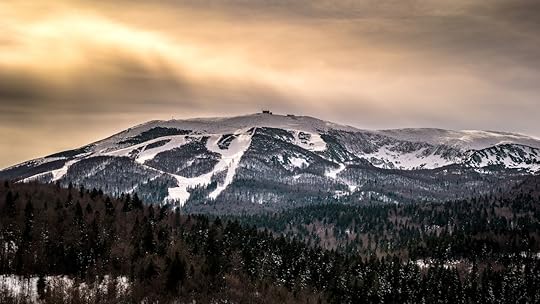
Photo: Alen Makota/Shutterstock
The Jahorina Olympic Ski Centre
Jahorina — which, together with Bjelašnica, is one of the two big ski areas — is located just 17 miles from Sarajevo and comes equipped with 17 ski slopes and six chair lifts. The well-groomed slopes hosted several events in the 1984 Winter Olympics, including the Women’s Alpine Competitions. The Olympic Black ski run can only be accessed by a precarious T-Bar, a surefire way to get the adrenaline pumping.
Jahorina also offers night skiing and has many bars and cafes peppered through its ski fields. If you want to immerse yourself in the local culture, step into Café Restaurant Peggy. As you walk in, you’ll be hit by the smell of smoked meat and the sound of wild Balkan music. Navigate through the throng of hip-shaking skiers to order rich hot chocolate topped with whipped cream.
Tip: Rent your skis at Ski Rental Kristal. The team is extremely helpful, and if you make an effort to be nice and greet them in Bosnian, they will find you comfortable ski boots at the most reasonable price. They might also offer you some rakia, a fruity brandy popular in the Balkans. After a few shots of rakia, you may also find yourself being offered generous discounts on your ski equipment.
Cost: All-day ski pass: $26, ski equipment: $11 per day, one hour lesson: $20
Ski Centar Bjelašnica
Bjelašnica sits approximately 45 minutes from Sarajevo, has eight ski lifts, and nearly eight miles of ski slopes. This Olympic mountain, which hosted the Men’s Alpine Ski events during the 1984 Winter Games, offers plenty of opportunities for glade skiing through the forests alongside the slopes.
Bjelašnica offers spectacular views from the top of the mountain. At the bottom, a cozy café with a fireplace serves delicious pizza, sausages, and crunchy fries. You will have ample opportunity to consume all the calories you burned while skiing.
Cost: All-day ski pass: $20, ski equipment: $8 per day, one hour lesson: $20
Smaller ski areas
There a few smaller ski areas that have more of a rustic feel and offer better prices than the large ski resorts. The terrain isn’t as well-groomed at any of them, but they offer plenty of opportunities to ski off-piste and incredible value for their cost.
Malo Polje at Mount Igman and Blidinje-Risovac are best for intermediate to expert skiers, whereas Ravna Planina is more of a beginner-friendly ski area.
Average cost: $10 for a ski pass and $6 to rent ski equipment
How to get there
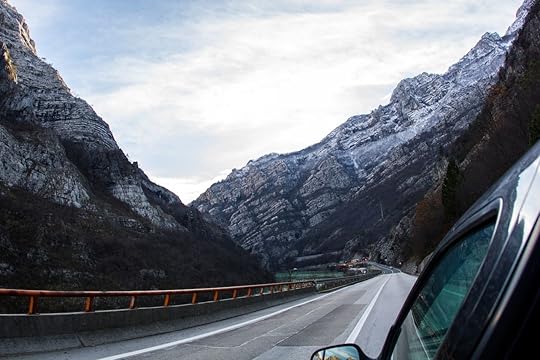
Photo: MaryG123/Shutterstock
Car rental
Car rentals in Bosnia are very affordable. The cost of renting a car with insurance and ski racks should not exceed $20 per day. If you had been planning to rent a car outside of the country and drive it in, be sure to check the fine print first. Many car rentals exclude Bosnia and Herzegovina from their permitted countries list.
SIXT, however, is extremely reliable, and Bosnia and Herzegovina is on its permitted country list. It also has excellent customer service. Alternatively, Bosnia-Herzegovinacar.com is a local company that connects you with all the Bosnian car rental agencies.
A word of caution: There will be rare occasions when you encounter rogue policemen looking for a bribe. If they pull you over for no apparent reason, insist they bring you to the police station and take down their details. Be polite but firm.
Airport shuttle
If you don’t want to rent a car, it’s worth speaking to your accommodation about if they offer a shuttle service. Most places provide it for a minimal fee.
Bus
In the peak season, a bus service runs every morning from the National Museum bus stop in Sarajevo to the Jahorina Ski Resort.
Where to stay

Photo: Termag Hotel Jahorina/Facebook
Luxury hotels are around $80-120 per night, which is what you’d pay at an ultra-budget place at resorts elsewhere. Termag Hotel sits within walking distance of Jahorina ski area, and you can ski right out the door in the morning. It has a sumptuous pool and spa, and it offers a particularly delicious milk caramel for dessert in its restaurant.
Another luxury option, Hotel Bjelašnica, is a half-mile from the Bjelašnica ski lift in Babin Do and 12 miles from Sarajevo Airport. The hotel has a barbecue and sun terrace, and guests can enjoy a meal at the restaurant surrounded by nature and woods.
If you’d prefer somewhere more budget-friendly, you can opt for the Bergkranc Hotel & Resort, which is just 25 minutes from Sarajevo and 15 minutes from the Jahorina Ski Resort. Bergkranc is a family-run hotel with German roots. Expect to be wrapped in warmth and hospitality. It also offers free Netflix and home-brewed alcohol, perfect for those cold winter nights.
Airbnb, Hostelworld, and Booking.com all offer reasonably priced options that cater to both solo and group travelers. As a rough guide, it should cost you approximately $47 per night for a four-person apartment in Sarajevo.
Other good things to know

Photo: Viktoria Hadlaczki/Shutterstock
Apart from skiing, you can indulge in many other winter activities. Termag Hotel offers a day spa for $28 per day, or if you are feeling particularly adventurous, you can hike the Bosnian mountains with a local guide for $55, which includes transportation and guide services for groups of two to five people.
Should you need to stock up on ski apparel and gear, you’ll find plenty of ski shops for that. Nuhanovic offers a range of options at affordable prices.
Be sure to have a cup of coffee. Bosnians take their coffee extremely seriously. It is normally served in delicately engraved traditional metal pots with sugar cubes and Turkish sweets on the side. The coffee should be slightly frothy at the top. If it isn’t, it’s perfectly acceptable to get fired up about the lack of coffee froth.
Bosnians aren’t the chattiest when it comes to strangers. So don’t get offended if your cheery greeting is met with a curt smile. Also, when asking for directions, you will most likely receive straightforward instructions which could end with an abrupt, “Go right, go left, go!” However, if you have the opportunity to get to know them on a deeper level, you will be showered with warm hospitality and plenty of food. 

More like this: Why you need to ski in the Pyrenees’ La Cerdanya valley
The post The ultimate guide to skiing in Bosnia and Herzegovina appeared first on Matador Network.
What is bleisure

“Business or leisure?”
It’s a question that’s been asked a million times at hotel check-in desks, car rentals, and airline ticket counters all over the US and the world: “Are you traveling for business or leisure?” Fun or work?
Now there’s a new answer: bleisure.
Otherwise known as a “bizcation” or “workcation,” bleisure is a growing trend in the travel world where business travelers tack on a few extra days at the beginning or end of a business trip for some “me time.” These extra days can be used to explore the destination more, relax and recharge, or just have a slow day or two to catch up on work.
While in the past bosses might have frowned on this (and employees were unsure of policy and too afraid to ask), over the past few years there’s been a shift in communication with boss and employee being on the same page regarding a bleisure extension. Last year saw 60% of business trips having a leisure component of some kind added, showing the trend is not only growing but also being actively adopted and promoted by companies. With $286 billion spent on domestic business travel in 2016, there’s definitely enough wiggle room in those travel budgets.
There are several reasons bleisure travel is starting to take off. First is the type of travelers making these trips: millennials. Growing in power and numbers in the workforce, the millennial generation is traveling more for business and going on more business trips than past generations, taking an average of 7.4 trips a year.
This feeds into the second reason, which is a better work-life balance, something that millennials have expressly prioritized regarding when and where they work. Millennial employees want to be seen and appreciated as valued members of a company, not replaceable cogs, so they apply to and work at companies that treat them as such, allowing them to balance work and their personal lives.
“The rise in bleisure travel correlates with the fact that more and more people want to create a better work-life balance for themselves,” says Hertz vice president of travel distribution sales Maurice Honor.
Employers have been grappling with this new workforce trend and, eager to retain personnel, are opening up to ideas and policies like bleisure as it prevents burnout and promotes loyalty — a happy employee is a better asset to the company overall, with increased productivity and a greater likelihood of staying at the company for the long-term. So if that calls for a few extra days of some off-time here and there (especially given that, as the first generation to enter the workforce with technology and the internet, millennials are constantly tuned in anyway) then companies are getting on board and adding bleisure policies, which vary from company to company on details like hotel stays, what can be discounted as a business expense, length of extension, etc.
And it’s not just hip start-ups full of young people that are incorporating bleisure: major corporations are taking notice, with influential players in the business travel markets like AMEX Global Business Travel writing and sharing blog posts and articles detailing the many benefits of allowing employees to take bleisure time. Top travel companies like Expedia have also been running studies on bleisure travel to demonstrate its benefits and scope.
“But wait. Won’t the employee still have to pay for their own hotel for the extra nights, as well as meals and stuff? If they’re in a major city, that won’t be cheap!”
True, adding a bleisure day or two will be on the travelers’ own dime. But they can still take advantage of some of the many perks of business travel that will reduce costs, like asking to use the company’s lodging rate at the hotel. A lodging rate is a reduced per-night fee negotiated between the hotel and the company that can save major bucks, and many companies are already implementing this into their bleisure policies for jet-setting employees to use.
Bleisure has already made itself at home in the US, with top domestic destinations like Seattle, Denver, Atlanta, and more. Smaller cities like Minneapolis or Tampa that may not otherwise receive huge tourist numbers, but do see a lot of business people, can also be appealing for a long weekend. While there may not seem like a ton to do, a craft brewery or trendy food hall is usually never far away, and personal trip expenses can be kept very low.
Adding a bleisure addition to international trips is also on the rise, with 80 percent of business trips abroad having been extended. With the company footing the bill for that international flight to Tokyo, one of the leading international bleisure destinations, why not?
So next time you’re planning for that big business trip, don’t be afraid to ask your boss if you take that extra day or two to do that outside-the-city hike you’ve always wanted or explore museums. Chances are they’ll approve it and maybe even encourage it. Bleisure is a fantastic way for companies to show appreciation for their employees but also for employees to broaden their worldview, which will make them better businesspeople, better travelers, and, most importantly, better people. 

More like this: Airbnb’s top 10 trending summer travel destinations for 2019
The post Bleisure is the next biggest trend in travel, and it’s redefining the work-life balance appeared first on Matador Network.
September 3, 2019
Chappelle mocks Bourdain's suicide

Early in a 2016 episode of Parts Unknown, Anthony Bourdain talked to an Argentinian psychiatrist about depression. Later, outside the confines of the stereotypical psychiatry office with a drink in hand, Bourdain opened up further. “I’m not going to get a lot of sympathy from people, frankly. I have the best job in the world.”
For the most part, he was wrong. People around the world — especially those in the restaurant industry and food media — collectively mourned when Bourdain committed suicide at the age of 61 in a hotel room in France while filming an episode of Parts Unknown on June 8, 2018. Yet three years after the Argentina episode aired, and more than a year after his suicide, there is one person with no sympathy for Bourdain: Dave Chappelle.
In Sticks and Stones, Chappelle’s fifth Netflix special, he opens with a jab at Bourdain.
“Good people of Atlanta, we must never forget that Anthony Bourdain killed himself,” Chappelle says. The abrupt statement is accepted with some laughter from the audience. “Anthony Bourdain had the greatest job that show biz has ever produced. This man flew around the world and ate delicious meals with outstanding people. That man, with that job, hung himself in a luxury suite in France.”
Chappelle then segues into talking about an “urban genius” from his high school who went to an Ivy League school and then law school, where he married and divorced a woman he met. Then Chappelle recalls seeing him recently working as the manager of a DC Footlocker living with his mom for the last 10 years. “Never occurred to this n**** to kill himself,” Chappelle says. “He’s alive and well in DC.” He later tacks on that maybe that friend should think about it.
Chappelle tepidly walks back some of the sting of mocking suicide by quickly saying, “No matter what it might look like from the outside, you don’t know what the fuck is going on inside.” The gist is that it’s fine to mock something so long as there’s a throwaway line giving context. His joke opened the door for victim-blaming and only closes it halfway.
It’s far from the most offensive joke in Sticks and Stones. In fact, it’s probably the least offensive joke in Sticks and Stones. Other positions Chappelle takes: Michael Jackson’s accusers are lying (and should be thankful if they were molested), #MeToo caused anti-abortion laws in the South, the opiod crisis is fine, and the LGBTQ community can’t take a joke. The standup special is an entire set crafted to stake himself out as the opposition. Opposition for opposition’s sake isn’t funny or clever. It’s not even anti-PC culture. It’s just lazy — and part of the reason the special has a flatline 0 percent critic approval rating on Rotten Tomatoes. It’s saying something that even Chappelle’s least offensive joke can move the conversation on mental health backward.

Photo: Donald Bowers Photography/Shutterstock
I understand that it’s the comedian’s job to comment in a humorous way about tough topics. That’s part of the reason why I’ve always loved watching Chappelle’s work. Yet other than one glossed over bit in Chappelle’s five-minute-plus opening monologue — “you don’t know what the fuck is going on inside” — the Bourdain joke only makes it harder for people with mental illness to seek help.
Chappelle is a name-brand comedian performing for the largest streaming platform in the world (Netflix reportedly paid Chappelle $60 million for a three-special deal). The more people who make light of suicide, and the more people who link mental health to success, the more accepted it is for others to publicly judge without seriously considering mental health issues. Even worse, it reinforces what many people fighting depression think: There’s someone out there who has it worse. I don’t need to talk to anyone; they do.
I was in college the first time a friend committed suicide. I had just joined Auburn University’s newspaper, The Auburn Plainsman, and one of my first news assignments on staff was to investigate a police gathering at a parking garage near the fraternity house I lived in. I was getting ready to head over when I got a text that we had a mandatory fraternity executive meeting. There, I learned the police activity I was assigned to cover for The Plainsman was the suicide of my friend and fraternity brother.
We locked everyone in a room together and spent the night drinking beer and talking about mental health, and then spent the next few days doing the same. Still, it wasn’t the last suicide, and was far from the last suicide scare, we dealt with together. It’s not easy to overcome the swell of suicide stigma.
By the time of Bourdain’s suicide years later, the memories were still raw. Bourdain’s work was something of an obsession for me, just as it was for many others in food and travel journalism. I covered his words many times for various outlets I worked for. I wrote a perhaps overly long story about seeing him speak and how complex of a character I found him. His death was the first, and so far only, time a celebrity death has made me want to hide away with my own thoughts and wonder what this is all for.
Charities, chef awareness groups, and others went to work after mourning Bourdain. His suicide encouraged action. It furthered the conversation around mental health, particularly in the restaurant industry. Chappelle works against that when he trivializes suicide and reduces it to having to do with a person’s career.
Punching down like Chappelle does in Sticks and Stones is hard to watch. It’s even harder to think about how it encourages others to punch down. But he offers an answer midway through the special: “If you at home watching this shit on Netflix,” he says, “remember, bitch, you clicked on my face!”
So maybe, if you haven’t already, just don’t click on his face. 

More like this: The 13 wisest things Anthony Bourdain said about travel
The post Dave Chappelle mocks Anthony Bourdain’s suicide in Netflix special appeared first on Matador Network.

Thailand eases up on cannabis

Thailand, long one of the harshest countries in the world surrounding drug trafficking, removed cannabis and hemp extracts from its list of Category 5 narcotics on Monday, according to Reuters. The removal of the substances from the banned list is a major step towards promoting medical cannabis investment and development in the Southeast Asian country of nearly 70 million. This is huge progress in a country where possession of a Category 5 drug product carries a sentence of up to 15 years in prison and fines of up to 1.5 million baht (about $49,000).
The change in law applies to extracts from cannabis and hemp plants that include CBD, CBD-based products, and other substances with a THC content of less than 0.2% according to the report. “The intention is to allow extracts to be used in medicine, cosmetics and food and support hemp as a cash crop,” said Secretary General of the Thai Food and Drug Administration Tares Krassanairawiwong to reporters on Monday. She noted that both hemp seed and oil would be exempt from the update. The country also legalized medical research on marijuana.
Currently, only hospitals and research centers are able to apply for a license to develop these extracts, of which 334 permits have been issued thus far. Last month, Thailand shipped 10,000 bottles of cannabis oil extract to approved patients, the first time it had done so.
Possessing recreational cannabis remains illegal but is still prevalent throughout the country. People typically receive a fine rather than prison time, but imprisonment is possible. 

More like this: The 7 best cities for a cannabis-inspired vacation
The post Thailand removes cannabis extracts from narcotics list appeared first on Matador Network.

Hurricane Dorian damages Bahamas
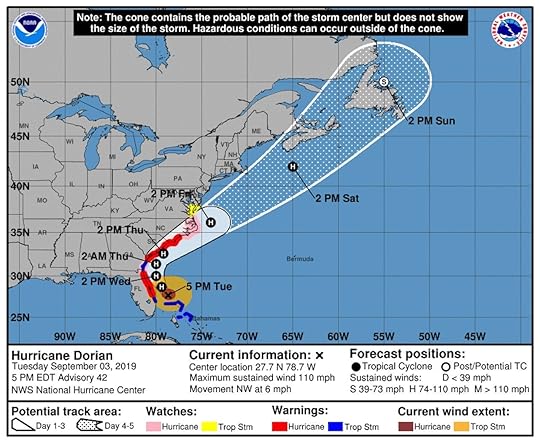
Hurricane Dorian, which has hovered above and now just north of Grand Bahama island in the Bahamas, is expected to move closer to the Florida coastline late Tuesday. The storm pounded Grand Bahama and the neighboring Abaco Islands, making landfall on Sunday as a Category 5 hurricane. The storm stayed over Grand Bahama on Monday, drenching the island with heavy rains and high winds and tearing neighborhoods to the ground. At least five people have been killed in the Abaco Islands, where entire towns have been leveled by violent winds and surging seawater.
The storm was downgraded to a Category 2 hurricane on Tuesday as it slowly moved northwest from Grand Bahama at about three miles per hour. Rescue efforts on the Abaco Islands, which are home to many Haitian immigrants, are underway but have been hindered by flooding and continued severe weather. Rescue teams and emergency personnel have received more than 200 phone calls from residents stranded on roofs, inside flooding homes, or otherwise in peril and needing urgent assistance.
As of Tuesday afternoon, Dorian doesn’t look to be done with its path of rampant destruction. By 10:00 PM Tuesday evening, Grand Bahama is expected to be relieved of the worst of the pummeling, with the storm shifting northward toward the US. As the storm slowly moves away from Grand Bahama, residents of Florida’s eastern coast are bracing for high winds and other destructive weather patterns including driving storm surges. Palm Beach County, north of Miami, was hit with tropical-storm-level winds on Tuesday morning, with local authorities urging people to stay inside. Further north, in Jacksonville, response teams have been assembled to respond to flooding and other emergencies while in Georgia and South Carolina evacuations have been ordered as the storm path moves closer to the United States mainland.
You can donate to hurricane relief efforts in the Bahamas through various organizations, including the Salvation Army, the Red Cross, and World Central Kitchen — an organization created by Chef José Andres that serves food to hurricane-affected areas and is currently on the ground in the Bahamas. 

More like this: Traveling during hurricane season? Here’s everything you need to know
The post Hurricane Dorian leaves path of destruction through Bahamas, inching toward US appeared first on Matador Network.

Foodie stops in Mesa, Arizona

A vacation to Arizona for most means squeezing into Antelope Canyon, lazing at a resort in Scottsdale, or watching their favorite baseball teams face off during Spring Training. Few come to the state for the food alone. But not only is Arizona home to a rising and thriving restaurant scene in cities like Phoenix and Tucson, it’s also an underappreciated producer of an enormous variety of fresh produce and food products. Arizona’s warm, dry climate means that there’s something in-season year-round — peaches in spring, chilies in summer, olives in fall, and citrus in winter to name a few. Rather than just going to a restaurant and ordering a salad, try the bounty at the source by visiting Mesa, the Arizona destination all foodies should have on their bucket list.
Mesa — an aptly named city for farm-to-table enthusiasts — is located just a half-hour from Phoenix. It has a small but lively downtown with a weekly farmers market and plenty of restaurants that show off local food products. But the real draw for visitors is the Fresh Foodie Trail, a collection of food producers cleverly linked together by the tourism board in response to the growing trend of agritourism. A long-popular feature of the European economy, agritourism is the answer to both Americans’ growing desire to learn more about where their food comes from and the need for farmers to generate another source of income. By opening up their doors to the public and entertaining visitors with hands-on experiences and tastings, farmers educate consumers and stoke interest in buying local, farm-grown food for their own tables. A rare example of the elusive win-win.

Photo: Visit Mesa
Mesa’s Fresh Foodie Trail (which also features stops in the nearby small towns of Queen Creek and Gilbert) is extremely family-friendly and doable year-round, but many farms don’t offer tours in the summer when the desert heat can reach up to 110 degrees. For the mildest temperatures and a wide variety of in-season produce, plan your visit between February and April. There are 11 official stops on the trail, so depending on your interests, you could swap in any of the below spots for alternative places like Hayden Flour Mills, The Windmill Winery, or True Garden Urban Farm. But if you only have one day to play agritourist in Mesa, here’s the best way to tackle the Fresh Foodie Trail.
1. Schnepf Farms

Photo: Laura Reilly
To fully immerse yourself in the agricultural spirit of Mesa, skip the chain hotels and expensive Phoenix resorts in favor of staying on a farm. But that doesn’t mean you need to rough it. Sleep in a renovated Airstream trailer at The Cozy Peach, a glamping ground at Schnepf Farms. The trailers are equipped with plush beds, a stylish lounge area, a coffee maker, TV and WiFi, and, yes, a bathroom. Even with the amenities inside your trailer, you’d be better served spending your time outside biking the scenic 300-acre farm, visiting the petting zoo, and collecting fresh produce in the U-Pick garden. Schnepf Farms hosts many seasonal events that see hundreds of attendees, including a blowout Fourth of July party, the Pumpkin and Chili Party in October, and Christmas celebrations in December. A late-winter visit will coincide with the Peach Blossom Festival when the fields are awash with blush pink blooms, but peak peach-picking season doesn’t hit until May. Regardless of the time of year, though, you can guarantee the opportunity to try a slice of the butteriest, juiciest peach pie you’ve ever had at the farm bakery.

Photo: Visit Mesa
Make sure to build in time to your stay for relaxing at the farm and enjoying all it has to offer, but on the day you plan on setting out on the Fresh Foodie Trail, aim to leave the farm early. Fuel up with breakfast without even leaving your bed by ordering trailer-service, choosing between generous portions of French toast, egg dishes, fresh fruit, or sticky cinnamon buns. Take your breakfast on a lawn chair outside your trailer to breathe in the morning farm air, or go back inside to enjoy your bacon in bed before getting ready for the day.
Where: 24610 E Rittenhouse Rd, Queen Creek, AZ 85142
2. Queen Creek Olive Mill

Photo: Visit Mesa
Kick off your culinary trek at Arizona’s only working olive oil farm and mill, Queen Creek Olive Mill. Arrive in time to take the 10:30 AM Olive Oil 101 tour ($7), which is available first-come, first-served for groups under eight. While you wait for the tour to begin, grab a coffee at the in-house roastery Superstition Coffee and browse the store, which sells bottles of olive oil alongside balsamic vinegar, tapenades, hot sauces, stuffed olives, and a host of olive-oil-based spa products that will make you wish you packed a larger suitcase. The 45-minute educational tour is packed with guests, enough to warrant a microphone for the guide out in the grove, but you still get an intimate view of the trees, old stone mill (no longer in use but a nice photo-op), and the machines that press and extract the oil. You’ll learn what extra virgin olive oil actually means (it has to do with the pressing and flavor) and get to try some on the tour, but the more fun tastings are on the store floor where infusions like garlic, chili, and basil, as well as wackier flavors like chocolate and bacon, can be sampled. If you’re still feeling peckish, order an antipasto board and take it out to the outdoor, tree-covered patio.
Where: 25062 S Meridian Rd, Queen Creek, AZ 85142
3. Superstition Farm

Photo: Eric Buermeyer/Shutterstock
A 20-minute drive north brings you to Superstition Farm, a working dairy farm committed to educating tourists about environmentally conscious dairy production, as well as the importance of quality care for the animals. The jam-packed, hour-and-a-half farm tour ($9) includes a demonstration of dairy production at the “Moo-University” tour barn, a guided hayride around the farm, and a stop at the petting zoo filled with rescue animals such as potbelly pigs, miniature donkeys, goats, sheep, and more. Also included in the tour is a tasting at the Milk Bar, which has 12 flavors ranging from delicious (cookies and cream, strawberry) to questionable (grape?). If you packed a cooler bag, you can buy milk, yogurt, eggs, butter, and cheese at the Mooster’s Moo-tique shop. Close out your visit with a cone at the Udder Delights Ice Cream Sundae Bar, which also has a brick-and-mortar location in nearby Gilbert, but does it get better than eating ice cream churned on site?
Where: 25062 S Meridian Rd, Queen Creek, AZ 85142
4. The Orange Patch

Photo: Visit Mesa
The exterior of The Orange Patch, styled like a Wild West general store, is already Instagram bait, but hold off on a full-on photoshoot until you’re out back, wandering the idyllic and fragrant 110-acre citrus farm. Arizona’s low-frost, low-humidity climate — plus a whole lot of sunshine — makes it an ideal place to grow citrus, and you can try juicy slices of everything from classic navel and Valencia oranges to Rio red grapefruits and tangelos in the store. Peak season for production is in January and February, but you can enjoy the colorful blossoms later in the spring. Take a tour of the groves to learn about the picking process, pose underneath the orange trees with the Superstition Mountains in the distance, then cool off with a glass of fresh-squeezed juice inside and buy a few of your favorite citrus for the road.
Where: 2717 E Lehi Rd, Mesa, AZ 85213
5. Jalapeño Bucks

Photo: Laura Reilly
A short drive around the corner from The Orange Patch is Jalapeño Bucks, which proudly displays a sign saying it’s not Kansas City-style barbecue, or Carolina-style barbecue, or Memphis-style barbecue, or any other style you’re familiar with — Japaleño Bucks makes Arizona-style barbecue. Now, ask the majority of Arizonans what exactly that means, and they probably couldn’t tell you a consistent answer. At Jalapeño Bucks, it means a strong Mexican influence, a liberal amount of green chilies, and generous sides of chips and salsa and refried beans instead of mac and cheese and baked beans. A safe bet would be the green chili and shredded beef burrito or a red chili pork quesadilla. But those daring enough to order the signature dish — a peanut butter, jelly, and BBQ brisket sandwich — are rewarded for their bravery. Sweet, salty, ridiculously messy (and unexpectedly nostalgic for someone who grew up eating bacon and peanut butter on toast), the only thing about this giant sandwich you’ll regret is not opting to share.
Where: 3434 N Val Vista Dr, Mesa, AZ 85213
6. Agritopia and Barnone

Photo: Barnone AZ/Facebook
Finish out the day at Agritopia, an urban agriculture community in Gilbert with an 11-acre organic farm at its heart. There are several eateries on-site, including the popular Joe’s Real BBQ, but assuming you’re still recovering from Jalapeño Bucks, walk around Barnone (pronounced bar-none, not barn-one) instead. This craftsmen collective is housed in a repurposed airplane hangar and features shops such as Lettercraft (wood-burned decor and laser-cut wood gifts), Prickly Pear Paper (adorable greeting cards and prints), and Everybody Loves Flowers (floral arrangements).

Photo: Barnone AZ/Facebook
Wind down at Garage-East, an experimental wine bar serving traditional Arizona-made wine and fermented fruit drinks. Try the bittersweet Sonora Spritz, made with its own vibrant orange take on Campari. Beer more your thing? Barnone is also home to 12 West Brewing Co., which makes funky sours, fruity IPAs, and crisp ales. Both the winery and brewery don’t serve food but have a bring-your-own-food policy that allows you to bring in a wood-fired pizza from Fire and Brimstone (also in Barnone), order delivery straight to the table, or, if you’ve played it right and collected goodies at each of the stops along the Fresh Foodie Trail, dig into a little makeshift, farm-to-table picnic spread.
Where: 3000 E Ray Rd, Gilbert, AZ 85296 

More like this: This stunning Scottsdale desert has the most rewarding hikes for every ability
The post Mesa, Arizona, has the best farm-to-table food crawl in the US appeared first on Matador Network.

Best trips for parents without kids

It’s September, and the kids are back in school. Give them a couple of weeks to adjust to the new school year — and then start planning an adult getaway without them. Sure, we’re big proponents of having your kids travel, even when they’re young. But we also think parents should enjoy some alone time together without their offspring. It’s good for you both, and hence, good for the entire family. Here’s why you and your partner should take a kid-free trip and how to make it happen.
You probably already spend plenty of time with your kids.
A lot has been said about the amount of time parents in the US, UK, and Australia spend with their kids. It turns out to be far more than in many other countries. Even working mothers in the US spend as much time with their kids as non-working mothers did a few decades ago. That’s exhausting for parents and not necessarily good for their kids.
In How to Raise and Adult, Julie Lythcott-Haims in concerned with how over-parenting prevents kids from developing self-reliance and resilience. But she also notes that excessive doting on the kids is bad for parents, as well. “If you’re overfocused on your kid, you’re quite likely under-focusing on your own passion,” she writes.
Your kids need their independence.
Not only should kids not be the sole focus of your attention — since this puts a terrible burden on them to make you happy — but you should also give kids opportunities to fend for themselves. Okay, having doting grandparents watch them for a couple of nights might not qualify as fending for themselves. But it’s likely said grandparents, or whoever will watch your children, do things a bit differently than you do. Your children may have to be more in charge of their stuff for a couple of days and will learn that it’s okay if things diverge from the routine. Spending a night — or three or seven — without you will teach them that they don’t need you to step in for every small problem.
Happy parents make happy families.
Getaways are just plain good for a relationship. In fact, the married co-founders of the Gottman Institute — a Seattle company with an international reputation for successfully helping couples stay together — take a 10-day honeymoon together every single year.
Time away doesn’t just rekindle your connection with your partner. It also refreshes and prepares you to return to the daily chores of parenthood. Beyond that, it’s just a fun thing to do, and that’s a good thing. As the psychologist Madeline Levine wrote, “One of the most important things we do for our children is to present them with a version of adult life that is appealing and worth striving for.”
A parent getaway is easier to plan than a family vacation.

Photo: Ivanko80/Shutterstock
Organizing child care may be tough, and we’ll get to that in a moment. But when you’re planning a vacation for just the two of you, you can get one hotel room and rent a tiny car. You can drive four hours without stopping or finally use those airline upgrades since it’s just the two of you. You can fit everything into a backpack or a carry-on and arrive as late as you want; you’ll have no bedtimes to worry about. If you want, you can even book a room at a snooty wine country B&B that doesn’t allow kids.
Travel with the kids is wonderful, as is seeing the world through their eyes. But, let’s face it, you probably aren’t rolling into a bar after dinner with the kids. Or sleeping in until noon. And you definitely aren’t sneaking back to your hotel room before dinner for some couple’s time. Doing these things reminds you of why you two got together — and had those kids — in the first place.
You can work out the child care.
If you have parents of your own who can help with childcare, you’re in luck. You’re even luckier if they’re within driving distance. Ours are far away, so we’ve planned our getaways around their visits, dropped the kids off with them on our way somewhere else, or even flown the kids on their own to stay with their grandparents. It’s good for kids to spend more time with the older generation, and grandparents usually love feeling useful… as long as you don’t abuse their generosity by taking too long a trip.
Alternatively, maybe your child — or children — can spend the night at friends’ houses. You can return the favor by having those kids over some time; or, better yet, build up credit with sleepovers in advance of your trip. If you’re relying on another parent’s generosity, your trip may have to be as short as an overnight, but it’s still an escape for the two of you.
If you can afford a babysitter, agree on what you’ll pay ahead of time. The hourly rate should not be the same after 9:00 or 10:00 PM, when everyone is asleep, as it is during the day. Also, if your trip includes weekdays when the kids are in school — or when other parents can drive them places after school — be sure to deduct that from what you pay the sitter.
Prep the caregivers.
Don’t assume the caregivers know the routines in your house. Be explicit and write daily schedules, with such minute details as when the child’s likely to wake up (or when they should wake up if it’s a school day), what they’ll eat for breakfast, what they should put in their backpacks (like basketball shoes), and so on.
Attach a separate list with contact information for the both of you, for any parent who may drive them in carpool, the school receptionist, the pediatrician, the after-hours pediatrician, the dentist, and the like. Add phone numbers and addresses associated with afternoon activities, even if they seem unnecessary. Just remember that this is all new to the caregiver, and they want to know where your kids are.
Leave your kids’ health insurance cards with the caregiver. Also, type up, print out, and sign a brief statement giving your caregiver permission to make any medical decisions on your behalf during your days away. This all sounds like a lot, but make these lists once, and you’ll only have to tweak them for next time. Sitters should appreciate the level of detail. As to grandparents, hopefully it’ll impress them with your preparedness — as opposed to overwhelm them — and put them more at ease.
Give caretakers a break.
Whether the kids are with grandparents, other friends, or a sitter, try to take some of the burden off of people who aren’t used to taking care of your kids 24/7. If you can, set up playdates for them at other friends’ houses, and see if you can have carpools pick them up for any activities they may have. That will give caregivers a welcome break.
Do the grocery shopping ahead of time, and leave the kids with plenty of clean clothes and laundered sports uniforms to eliminate extra housework. Also, leave cash for additional groceries just in case.
Thank everyone who made it possible.
Always come back from your time away with a small gift — like specialty jam, chocolate, or some other trinket from a shop at your destination — for the people who drove your kid somewhere, had them sleep over, or cared for them in your house. Show them you appreciate that they helped you have a some time away with your partner.
A weekend is all you need.

Photo: mimagephotography/Shutterstock
Not everyone will have the available child care and days off to take a longer break. Often, though, all you need is a weekend away to feel like you’ve gotten a chance to be adults again. In fact, if you go on too long a trip right from the get-go, you may feel anxious about being away — and the trip will have the opposite effect as intended. If it’s your first time away from the little ones, it’s best to start with a weekend.
We organized our first trips around business travel, going for five days to France when our first was little. It felt long but was an incredibly reinvigorating break. Our 10-day trip to Japan, when our second was just two, felt like two days too many at their young ages — as we really started to miss the kids.
You can go anywhere.
If you do go for just a weekend, you can probably drive a couple of hours and be at a great place — maybe by a beach, a local wine region, or even another big city. Seeing it anew, without the kids around, will feel fresh and different, even if you’ve been there before. You can also tag on a weekend to one of each other’s work trips.
While you’re there, do some things you couldn’t do with your kids — whether that’s reading the newspaper at an outdoor cafe for an hour, bar-hopping, or just getting 12 hours of sleep. If you’re active types, you could surf all day, play an entire round of golf, or go scuba diving (which is only possible for kids over 10). The options are nearly endless.
So just pick a place and go.
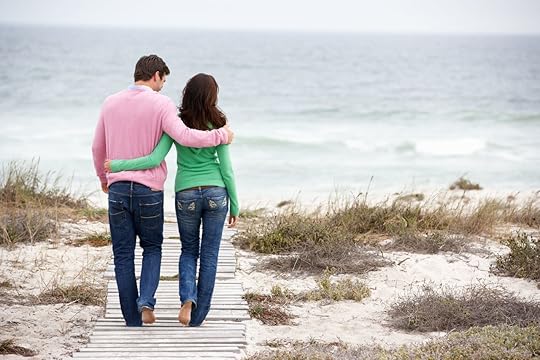
Photo: Monkey Business Images/Shutterstock
If you’re positive and upbeat about your trip, your kids will realize it’s no big deal. Of course you should call them; but when you do, ask them what they’ve been up to and then tell them about what you two have been doing. Assume that everything is fine when you call; don’t call to be sure they are managing without you. They probably are.
Travel sharpens our senses, puts us into the present, and makes us more aware of where we are. When you travel with your partner, especially after a period of time focused on work and family, it puts the two of you back into the present together. It turns your attention back to each other. That’s a nice place for it to be because when you’re a happy, fulfilled couple, you are better parents, too. 

More like this: How to maintain a healthy relationship while traveling with a partner
The post The kids are back in school. Time to take a trip without them. appeared first on Matador Network.

Matador Network's Blog
- Matador Network's profile
- 6 followers



